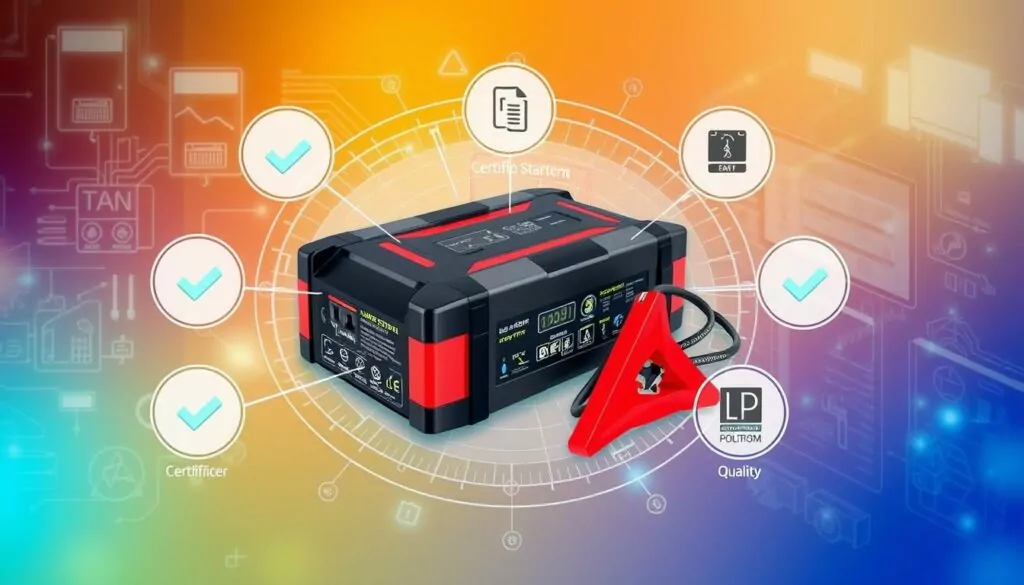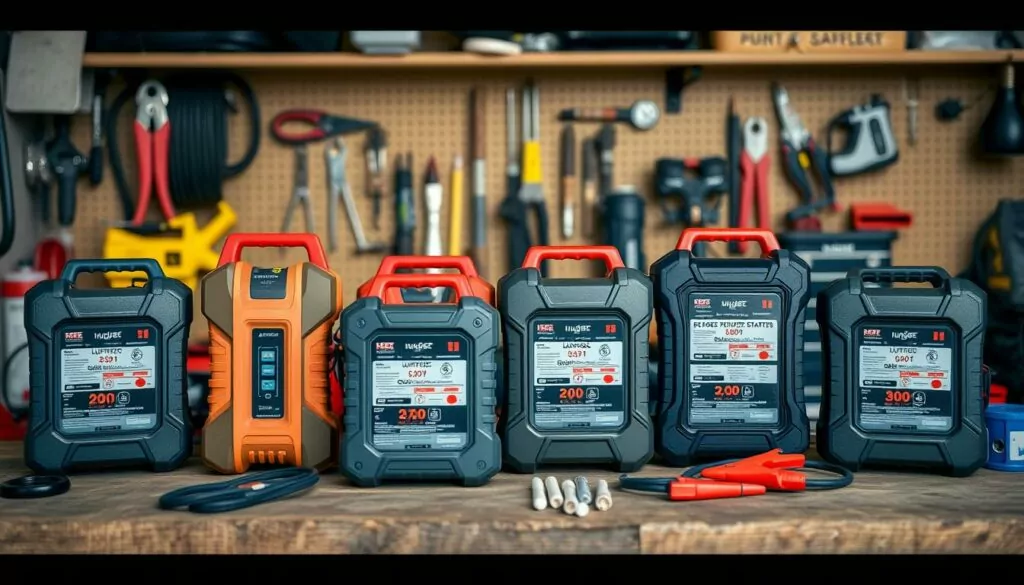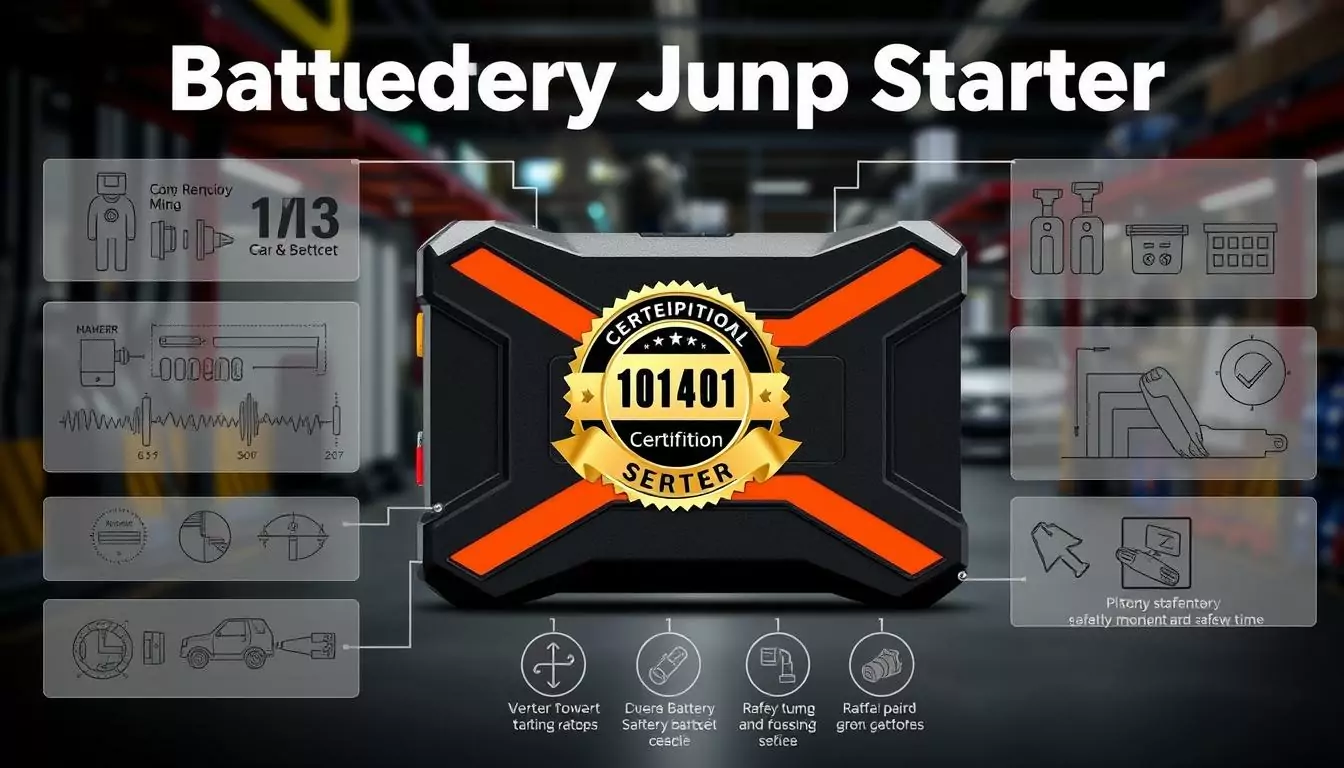Picture this: it’s a chilly March morning in 2025, frost creeping up your windshield, and your car won’t start. You reach for your battery jump starter, and in just a few minutes, you’re back on the road. Pretty sweet, right? But ever wonder what makes these gadgets so trusty? It’s all about certification standards—those behind-the-scenes heroes ensuring your jump starter is safe and gets the job done. Let’s dive in and see why they matter, plus how they help you snag the best one for your next roadside hiccup.
What Are Jump Starter Certifications, Anyway?
So, what’s the big deal with certifications? Think of them as a rulebook that manufacturers stick to, making sure your jump starter doesn’t just work—it works safely. These standards cover everything from dodging electrical mishaps to keeping the battery strong during a snowstorm. I’ve had my own car woes (who hasn’t?), and knowing my jump starter’s been rigorously tested? That’s some real peace of mind. It’s not just about firing up your engine—it’s about doing it without zapping your car or yourself!

Why You Should Care About Certifications
Certifications aren’t just shiny badges on the box—they’re a promise. For us drivers, they mean the jump starter’s been checked for car battery safety and can nail those vehicle jump start procedures like a pro. For the folks making them, it’s a quality bar to hit, keeping everything up to snuff with industry rules. It’s like a driver’s license for your device—proof it’s ready to roll. Skip it, and you’re basically tossing a coin on whether it’ll hold up.
The Big Three: Must-Know Jump Starter Certifications
Not every certification is the same, especially when we’re talking emergency vehicle accessories. Let’s break down the top dogs—UL, IEC, and SAE—and what they do for you. Trust me, knowing these can save you from a total dud buy.
- UL Certification: UL 2743 is the gold star for electrical safety. It checks for stuff like overcharging or short-circuiting—things you don’t want popping up at 7 a.m. in a deserted parking lot.
- IEC Compliance: IEC 62133 locks down battery safety, while IEC 61960 keeps performance steady. These are like your battery’s personal bouncers.
- SAE Standards: SAE J1494 focuses on cables and connectors, ensuring they can handle the power without turning into a melty mess.
| Certification | What It Covers | Why It Matters |
|---|---|---|
| UL 2743 | Electrical Safety | Keeps shocks and fires at bay |
| IEC 62133 | Battery Safety | Prevents leaks or explosions |
| SAE J1494 | Cables & Connectors | Manages high currents without a hitch |
Why Certified Jump Starters Are Worth Every Penny
Okay, certified jump starters sound awesome—but what’s the payoff for you? A ton, actually. These little champs do more than just revive your car; they do it right. Here’s why I wouldn’t settle for less.
Safety First (No Exceptions)
Certified jump starters pack built-in protections—like spark-proofing or overheating shields—that keep you and your car safe. They’re tested harder than a mechanic aiming for an ASE certification, where only about two-thirds make the cut first try. That’s the kind of toughness I want in my emergency vehicle accessories. Nobody’s got time for a sketchy device sparking trouble!

Reliability That Won’t Let You Down
Ever had a gadget flake out right when you needed it? Certified jump starters are built to shine, whether it’s freezing cold or blazing hot. They meet high benchmarks—think ISO 9001 vibes for quality—so you’re not stuck stranded. I learned the hard way that a cheap, uncertified model isn’t worth it when you’re already running late.
Peace of Mind? You Bet!
Here’s the best part: a certified jump starter gives you confidence to hit the road. It’s like knowing your go-to diner won’t botch your breakfast order—you just trust it. With these certifications backing you up, you’re set for whatever battery drama 2025 throws your way. Who doesn’t love that vibe?

Pro tip: Swap “example-video” with a real YouTube ID about jump starter tips for a working embed!
Jump Starter Certification FAQs
What’s the Difference Between UL and IEC?
UL (like UL 2743) tackles overall electrical safety and performance, while IEC (think IEC 62133) zooms in on battery-specific stuff. Both are clutch, just with different focuses.
Can I Use an Uncertified Jump Starter Safely?
You could, but it’s risky. Uncertified ones might skip proper testing, boosting the odds of a flop—or even frying your car. Why roll those dice?
How Do I Know If Mine’s Certified?
Check the box or manual for labels like UL, IEC, or SAE. If it’s murky, hit up the manufacturer’s website or customer support. Don’t just guess!
Do Certifications Bump Up the Price?
Yep, usually. Testing costs (sometimes $5,000-$20,000 per standard) push the price up, but the dependability? Totally worth it.
Are All Certified Jump Starters Equal?
Nope! Brands mix and match standards—some rock UL and SAE, others stick to IEC. Match the certifications to what you need most.
Ready to Level Up Your Roadside Kit?
Armed with this certification know-how, you’re set to pick a jump starter that’s safe, solid, and ready to roll. What’s your must-have feature in one of these lifesavers? Drop it below—I’d love to hear!
